Imaging double stars can be easier than other objects in that they can be seen through light cloud when sometimes the air is steadier. However rendering their colours with a colour camera is quite difficult. It is easy, and sometimes necessary, to over-expose the stars and this washes out any colour. A really good image of a star is very small and does not cover enough pixels in the camera for the matrix system to resolve the colours that are there. Telescopes that produce diffraction spikes can resolve colours in the spikes of over-exposed stars. It is tempting to increase the colour in processing by increasing the saturation, but this has hazards. A blue-green star will have a significant red component but, if the saturation is increased too much, the red component is reduced to zero. This can produce a pretty picture but not a real one (see my picture of Albireo below).
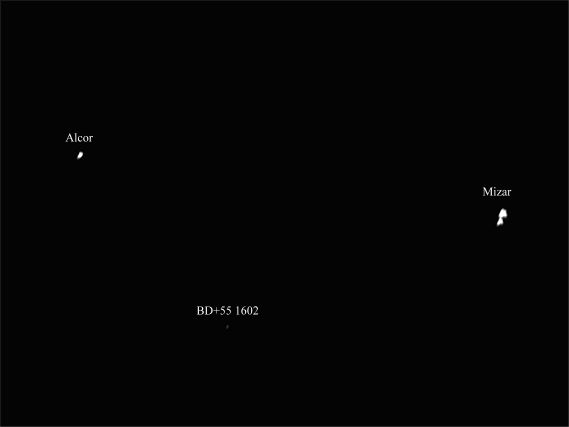
|
The complete Mizar system. Mizar and Alcor are separated by almost 12 minutes of arc and can be distinguished by anyone with good eyesight. Each star is itself a double, and the constituents of Mizar are also doubles. So Mizar is a quadruple star and Alcor is double. The two systems appear to be moving through space together, so it is assumed that they are associated despite their great separation. The faint star, BD+55 1602, is not associated and is simply in the same line of sight.
|
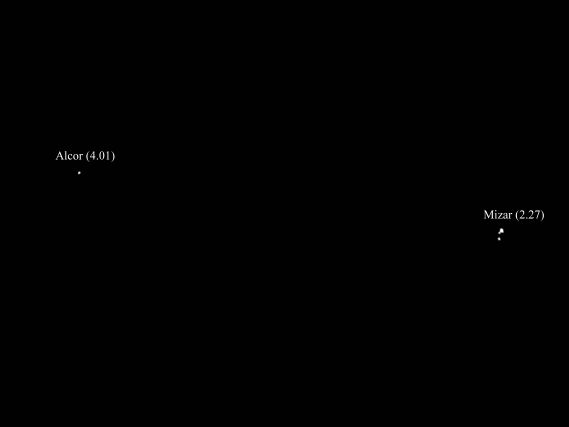
|
A shorter exposure of the same field to show the components of Mizar a little bit more clearly.
|
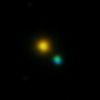
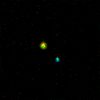
|
Albireo is β-Cygni. This is easily the best rendition of the colours of this beautiful double star that I have achieved. It was taken with an Olympus C5050 camera attached afocally to a William Optics DCL4337 eyepiece on my LX200. The primary star is itself double, the two components being almost identical in colour and in magnitude. The magnitudes are 3.08 for the orange component and 5.1 for the blue component and they are separated by 33 seconds of arc.
The picture on the left is a stack of five 1-second exposures. The resulting image was enhanced by increasing the saturation to 100%, applying a Gaussian blur of 6-pixel radius, and reducing the size to 25%.
It has been suggested that I over-emphasised the colours by increasing the saturation too much and that the picture does not represent reality. On the right is a single exposure of 0.25 sec, also with the colours enhanced, but if you move your mouse over that image you will see the picture with no enhancement. This is what the camera saw, but my eyes don't see the colours that are really there.
|
|
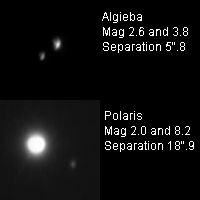
|
Algieba is Gamma Leonis. Its two components are both giant stars (10 and 23 times the diameter of the Sun), separated by about 170 AU.
Polaris is the Pole Star, or Alpha Ursa Minor. The brighter component is Polaris itself at magnitude 2.0; the fainter star is designated BD+88 7 and is magnitude 8.2. Polaris itself is double, the primary star is a yellow supergiant and is a Cepheid variable from the period of which its distance can be estimated as 431 light years.
|

